Pirate Ships and Black Eggs in Hakone, Japan
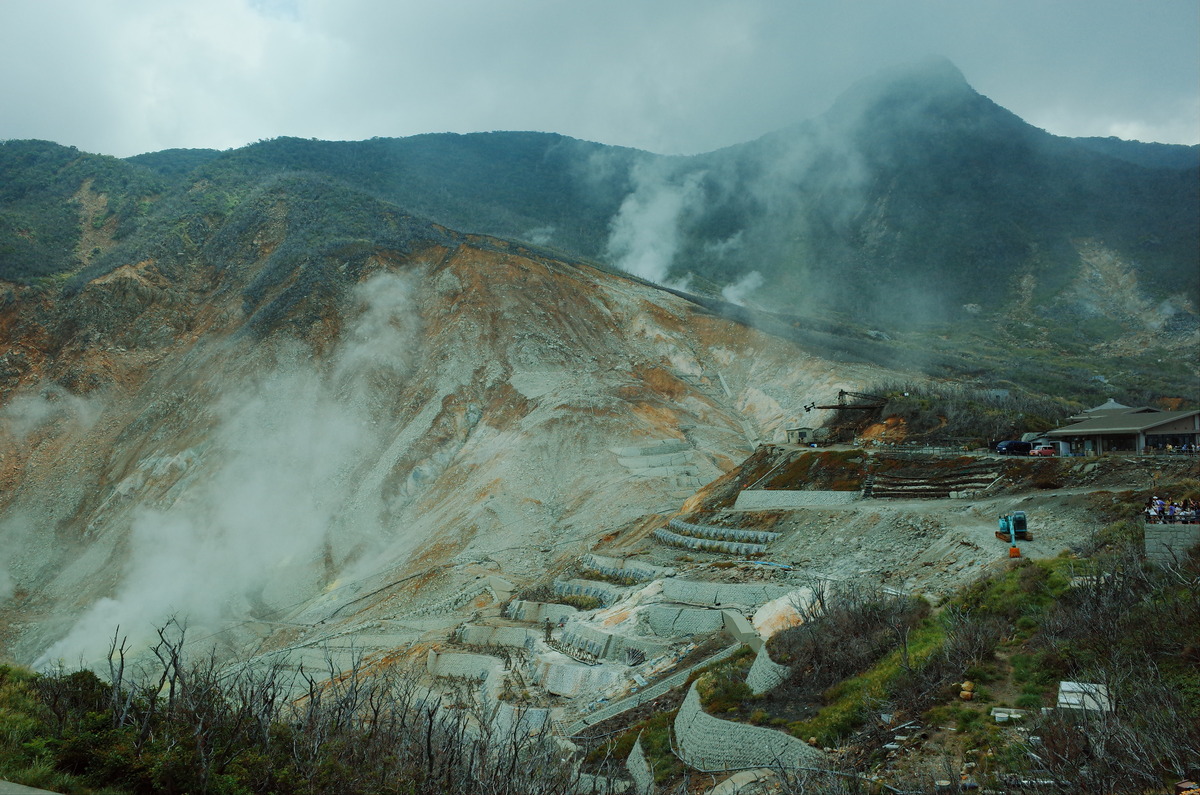
After a day of bad weather at Fuji-Q Highland, I boarded a train destined for the mountainous region of Hakone. Along with a standard fair ticket at Shinjuku Station, I was required to buy a reserved seat for a unique service train called the Limited Express Romancecar. The Romancecar first brought me to Odawara Station, which is an hour away from Tokyo. At Odawara Station, the train paused to decouple before it continued onward for another hour to Hakone-Yumoto Station. Once at Hakone-Yumoto Station, I was quick to board the first bus I came across. I was uncertain where the bus was destined for but figured I’d learn along the way.
From Hakone-Yumoto Station, the bus went into the hills of Hakone. It was a narrow two-lane route, with hairpin turns, which required the bus to constantly decelerate on an incline. The bus stopped near hotels, shopping centers, and in the middle of nowhere. After a half hour, when Hakone-jinja was listed on the bus marquee, I pressed the button next to my seat to signal to the driver I was ready to get off at the next stop. The bus stopped a block away from the south shores of Lake Ashi. I walked across a crosswalk next to the bus stop and towards the port of Hakonemachi-ko.
The port, on arrival, was devoid of any boats or ships. The water was calm, with fishers on the docks. The Hakone-jinja Shrine was visible from the port, which stood out with red paint. I walked along the edge of the port until I came to a narrow footpath to the left of a two lane road behind the shrine. The path, shrouded in tall grass and foliage, brought me to the left side of the shrine. Although the shrine gave the impression it was empty from the viewpoint of the port, the trees hid the mass of people who awaited their individual turns to have their photo taken in front of the shrine. I took photos of the shrine from afar and returned to the port.

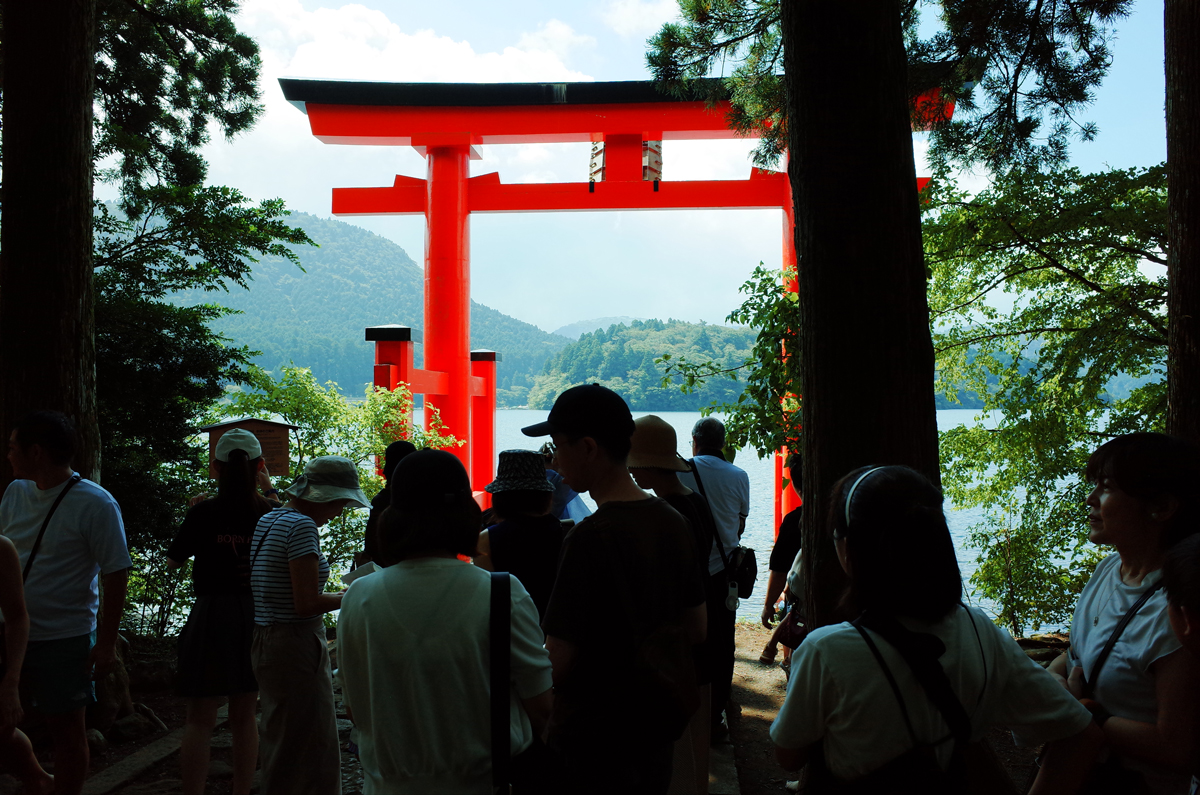
Taking a Pirate Ship Across Lake Ashi
As I walked to Hakonemachi-ko, I spotted a pirate ship headed towards the port. Fit with tall sails, and a modern motor, the ship was fast. It anchored before I was able to arrive at the dock. I entered a nearby ticket station and bought a ticket to sail across Lake Ashi to the volcanic valley of Owakudani. A standard ticket cost 1,000 yen, with the downside of not being allowed on the first class side of the ship. The other side of the deck was fine, with panoramic views of the lake. For the duration of the transit, I took photographs from an observation deck atop the ship. As the ship neared the port of Togendai, the smell of sulfur filled the air.
Once at Togendai, I had lunch at a restaurant on the second floor of the ropeway station. Near a window which overlooked Lake Ashi, I had cooked sausages and a sweet drink made with peaches from the Nagano prefecture of Japan. After I finished lunch, I took an escalator to the third floor of the ropeway station and bought a ticket for the cable car to Owakudani. The cable car was spacious, with ample seating, though the majority of the seats were empty asides from two other people. Along the sixteen minute ride to the top of Owakudani, the smell of sulfur increased greatly. Volcanic vents poked out of the side of the valley, which were active with columns of steam.
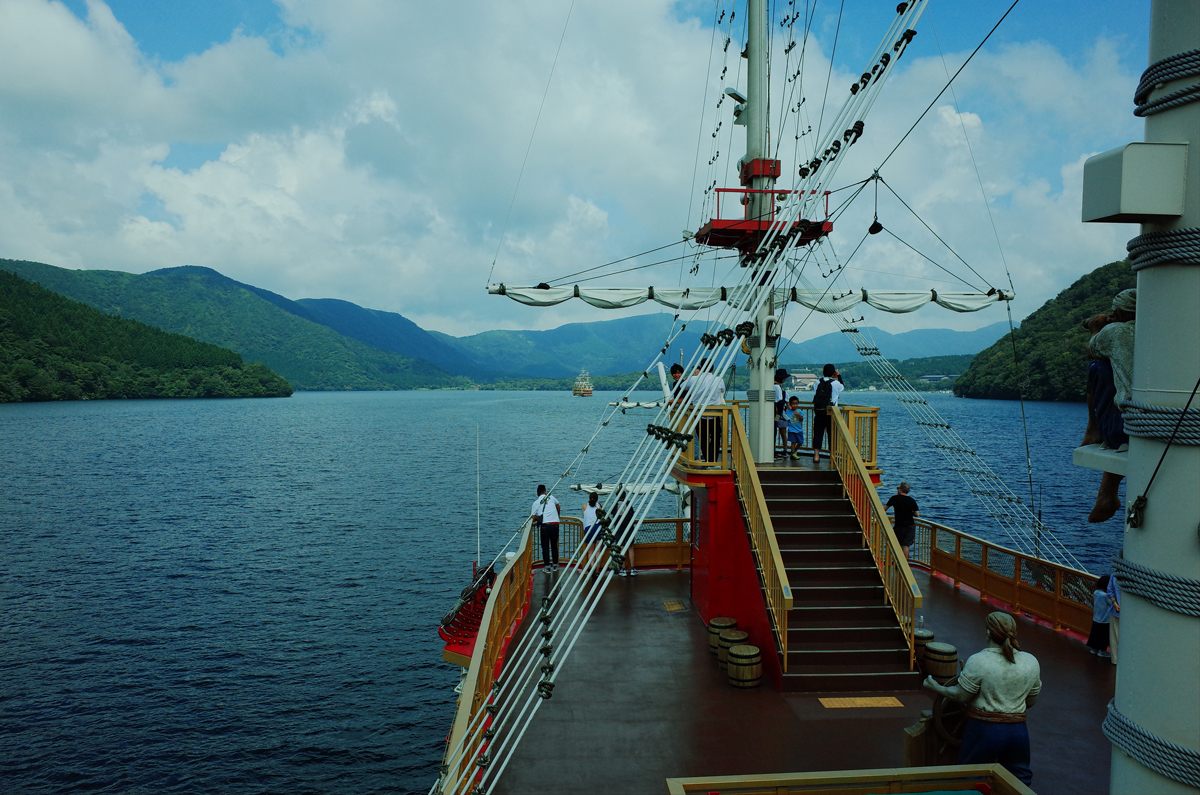

Eating Black Eggs at Owakudani
The cable car stopped at the top of the valley, with a view of the active volcanic region on the left. The landscape was reminiscent of Iceland, with a mixture of sand and lush green hills. Steam billowed from the valley floor, which was dotted with construction equipment and tan colored shacks covered in thick layers of sand. There were no workers present, which made the area look abandoned. From the exit of the cable car, I walked to the entrance of the Owakudani walking trail, which was unfortunately closed due to an increase in volcanic activity. Beyond the entrance, hard hats and other hiking equipment were organized neatly along a wall.
At a nearby restaurant and gift shop called Gokuraku Chaya, I waited in line to buy a fresh bag of hard-boiled black eggs for 500 yen. The unique black color, I learned, comes from water in the valley which has sulfur and iron. Although different in color, the taste was no different than a standard hard-boiled egg. Yet the aroma of sulfur clung to each egg, with and without a shell. I ate three of the eggs, which, if the rumor is correct, added five to seven years to my life span per egg. I pocketed the other two eggs and relaxed in the sun for a half hour on a bench outside. Afterwards, I walked to a different ropeway station on the opposite side of where I arrived to descend to Sōunzan Station.
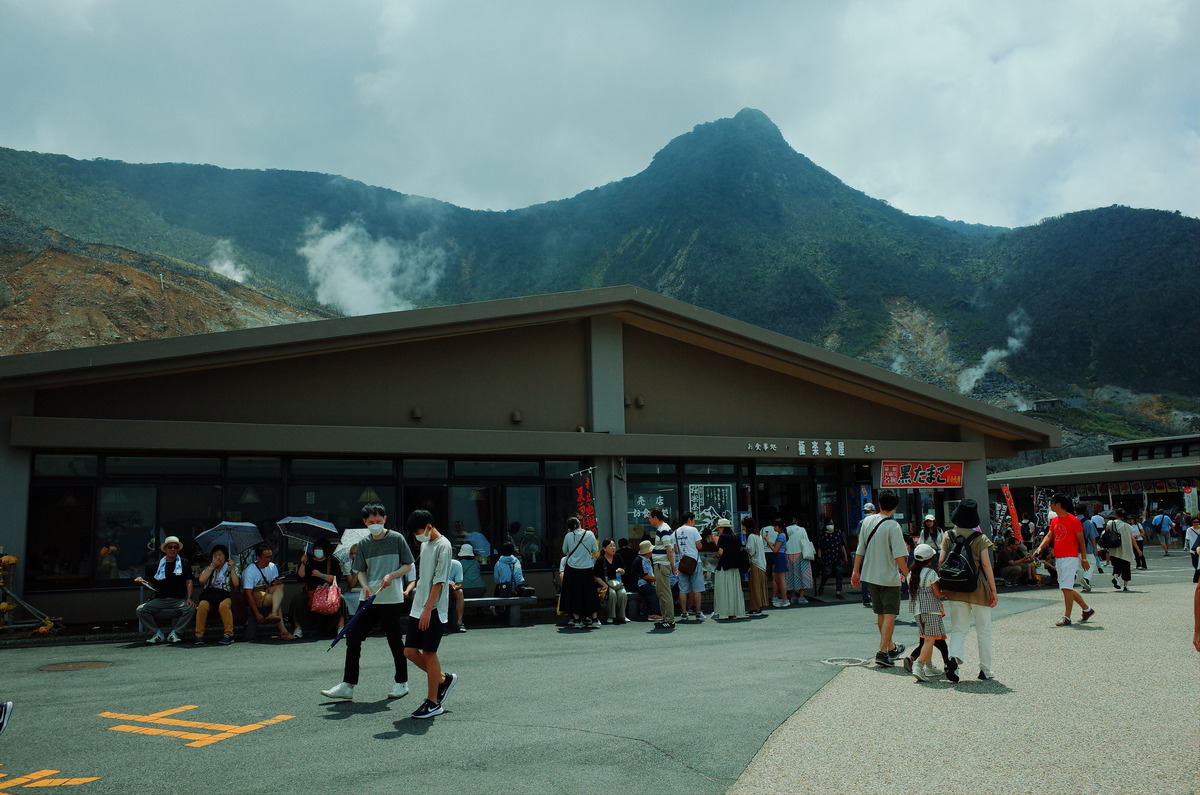
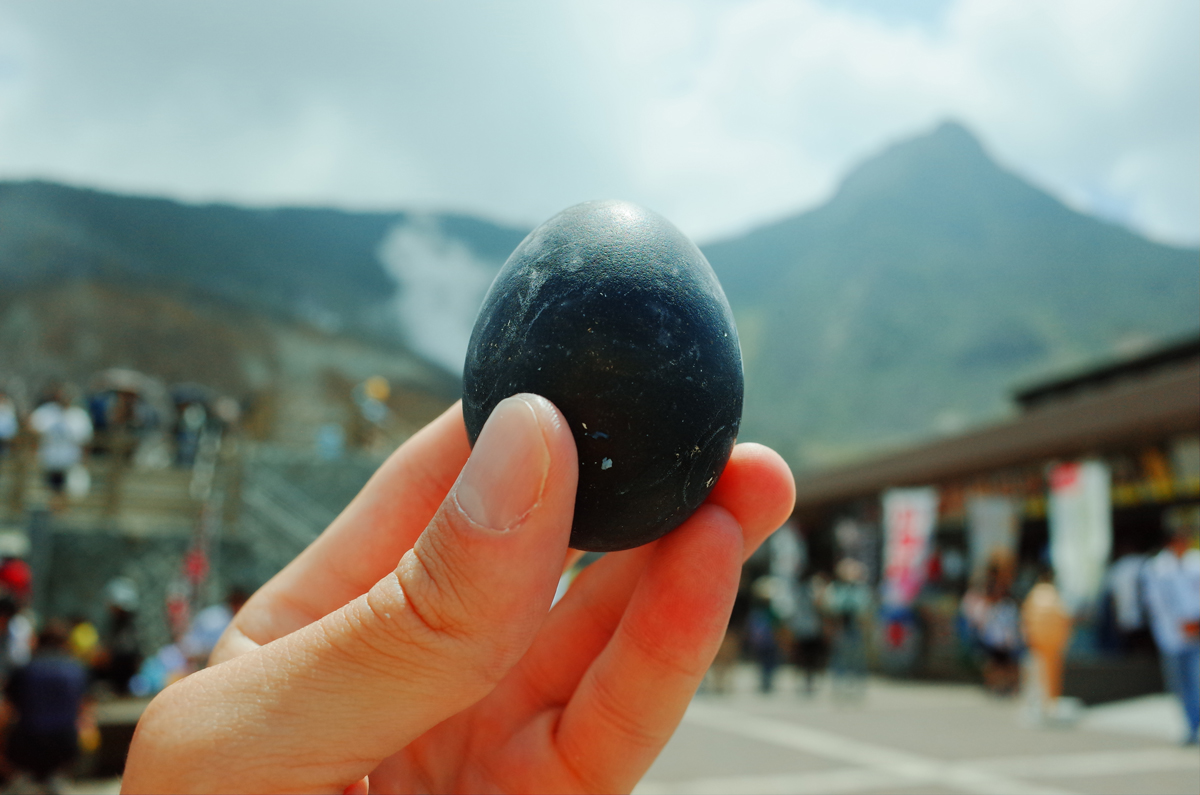
Once at Sōunzan Station, I boarded the Hakone Tozan Train to return to Hakone-Yumoto Station. Though the seats on the train faced inward, the views were picturesque. The railway snaked through hills, foliage, and across an expansive bridge with a steep vertical drop. At Hakone-Yumoto Station, I bought a standard train ticket to return to Shinjuku Station. The return trip had wide views of rural areas of Japan, along with smaller towns with distant mountains. After the train arrived in Shinjuku, I left the station to locate food before I returned to Akihabara for the night.
Dinner and Drinks in Kabukichō
For dinner, I went to the newly opened Kabukichō Tower in Shinjuku. The first floor was a mimic of nearby narrow alleys with plenty of neon signs and bar tools. I chose a restaurant called Kanto Shokusai and ordered a whiskey sour with a plate of chicken wings. In my honest opinion, neither the drink or food were good. The whiskey was watered-down and the wings were greasy. I quickly paid the bill and walked the nearby side streets of Kabukichō until I spotted a sign for a yokocho. The yokocho I stumbled upon was quiet, with a maze of narrow alleys and plenty of izakayas.
At first, I tried to go to a horror themed bar with a graphic of Leatherface on the door. Unfortunately, the bar was closed. At random, I chose a nearby bar with a French cinema theme. The establishment was small, with less than ten seats. The bar and bartender were in the middle of the cramped room, with a narrow staircase which led to a bathroom on the upper floor. The bar was quiet on arrival with two Frenchman and the bartender. I ordered an Asahi beer and sat near the door. My plan was to have a single beer and call it a night. But soon, a family from Italy arrived, followed by a small group of friends from South Korea.
I normally am socially awkward but after a beer, I joined the conversations. For five hours, I ordered beer after beer while I spoke with both groups of people. The family from Italy was on their first trip to Japan and was interested on what to do while in the country. I gave them recommendations and we added each other on social media. A person I spoke to from South Korea sounded as if they were from the United States. Their English was perfect, with no noticeable accent, which was an honest surprise. We discussed methods of learning Japanese and I asked them for recommendations on where to travel in South Korea.
At midnight, after eight beers, I checked my phone and had a moment of panic. I was not sure if I had missed the last train from Shinjuku to Akihabara for the day. I paid my tab and stumbled out of the door towards the nearest train station. I did not return to Shinjuku Station but a smaller nearby station. From what I remember, my Suica card did not work. Thankfully, I had cash on hand and paid for a paper ticket to reach Akihabara. My last remembrance of the night was the stairwell to the hotel. I woke early in the morning in the hotel room with the lights on, dressed in the same clothes, with the heavy smell of cigarettes.